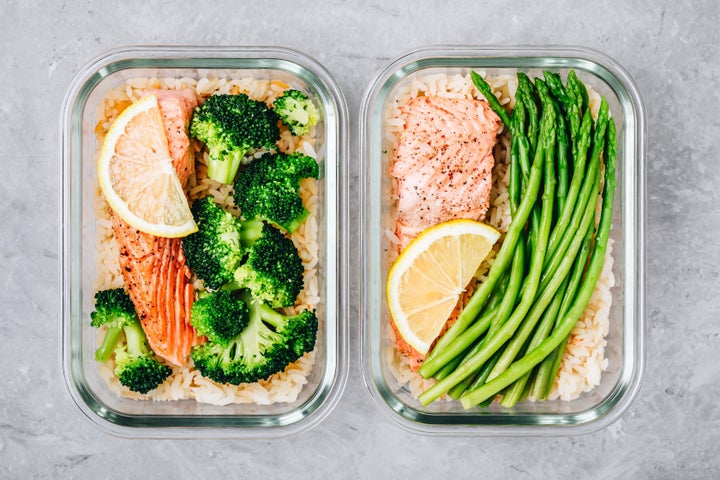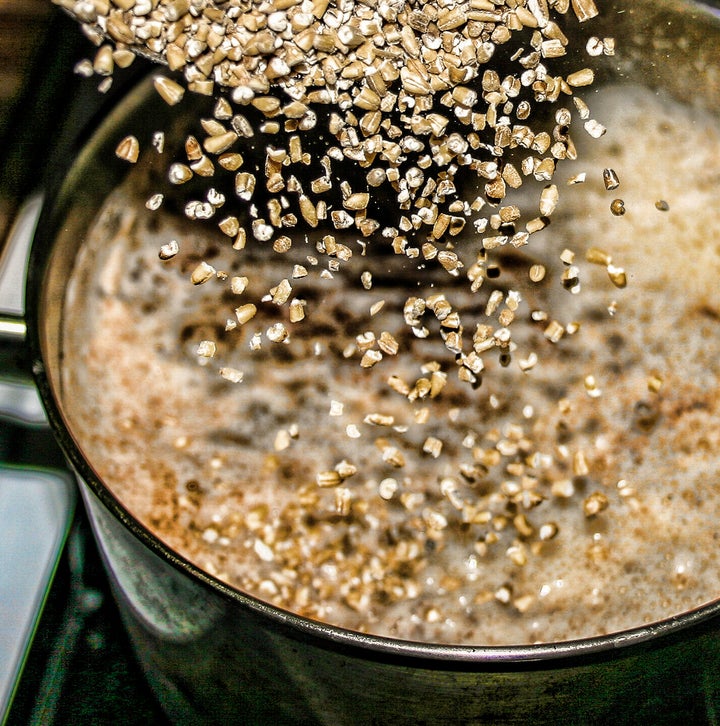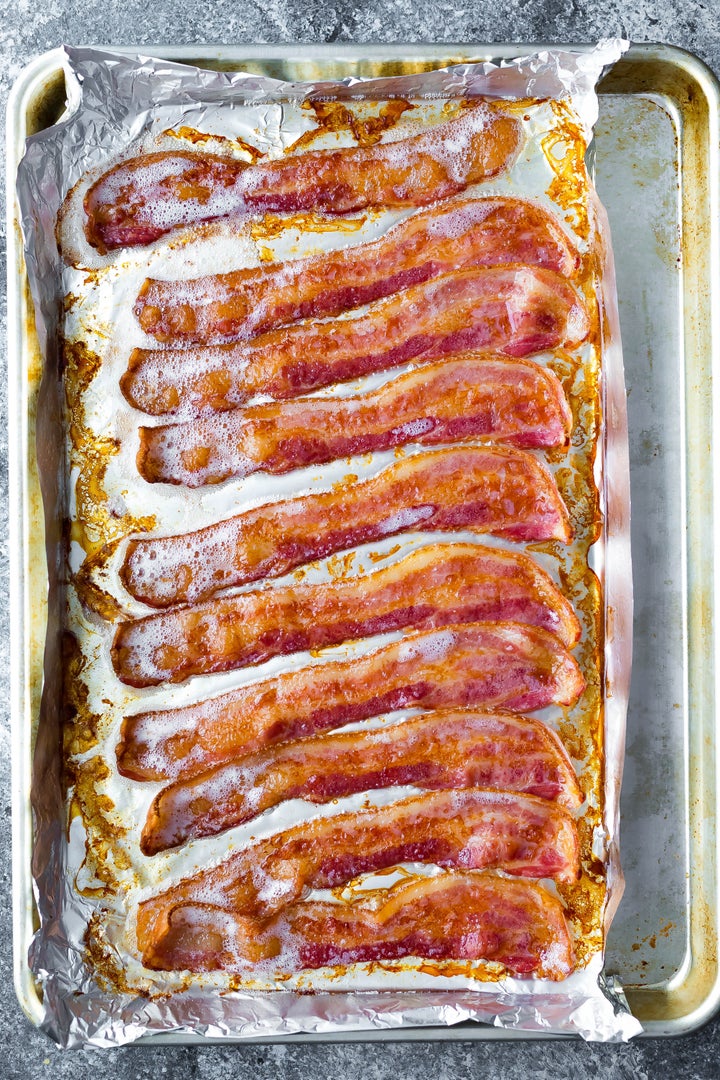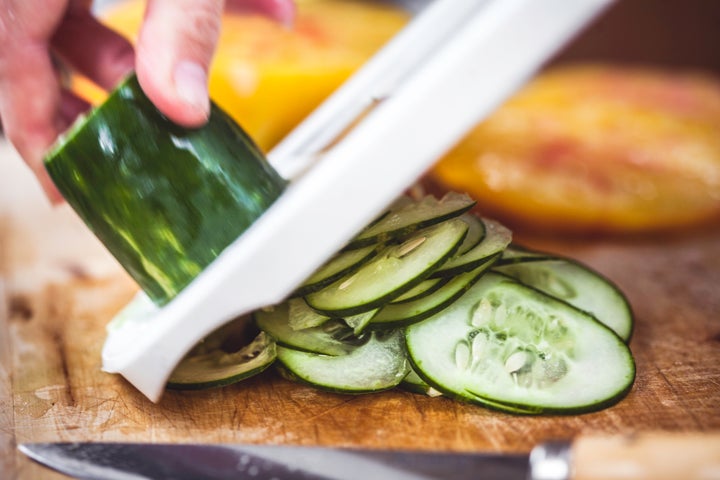Meal prep can feel like a daunting task ― every time you swear this weekend is going to be the weekend you’re finally crowned ultimate meal prep champion, you never quite emerge victorious.
“Most people I talk to don’t want to spend their precious weekend time prepping for the week,” said Rebecca Clyde, a Utah-based registered dietitian and cooking-for-one expert. “Even though they do feel like it saves them time and energy during the week, just knowing how many hours it’ll take is enough to not move forward with prepping.”
Instead of pushing yourself to feel differently, it can be more effective to focus on streamlining the meal prep process and let better feelings evolve naturally from there.
“Anything to save time and take the drudgery out of, say, chopping for an hour makes prepping food more enticing,” Clyde said. Hence the appeal of the mandolin ― it’s faster and it’s exciting to watch those veggies shoot through the blade.

“After saving so much time on that one thing, you start to feel like, ‘OK, that wasn’t so bad,’ and it’s those moments that make it easier to do it again,” Clyde said.
Here are 11 techniques that food experts use in the kitchen to make meal prep less of a time suck.
1. Master the art of doing one task while you wait on another.
“Think about which item you’re prepping that will take the longest amount of time and start there,” said Chicago-based registered dietitian Amanda Izquierdo. “This could be things like setting aside a protein to marinate, bringing water to a boil or preheating the oven.”
Processes that you can start and leave alone give you the opportunity to finish other tasks while you wait, such as slicing vegetables or mixing dressings.
2. Microplane instead of mince.
Instead of mincing garlic cloves with a knife, Izquierdo runs the cloves over a microplaner. “It removes the need for a knife and ensures the garlic pieces are a uniform size, which can be challenging when mincing,” she said.
Just slide the garlic clove back and forth to shave off tiny pieces, proceeding with caution as the clove gets smaller so as to not cut your fingers. “You can also do this with onion in soups or stews,” Izquierdo added.
3. Use an extra-large cutting board.
An extra-large cutting board can be a huge timesaver when chopping up ingredients.
“You can quickly set aside each ingredient on the board instead of having to place them into smaller bowls or containers to make space for the next item you need to chop,” said Michael Broughton, executive sous chef at Outlier in Seattle, Washington.
You also don’t have to wash or wipe down the board between each ingredient being chopped.
4. Get peeling down to a science.
Instead of holding foods in one hand and peeling them with the other, place the food (say, a cucumber or a carrot) on the cutting board and hold it in place while you peel.
“Most peelers can go in both directions,” said Broughton. “You don’t have to lift it off the item to take it back to the top and peel down. Peel up and down, and the process will go twice as fast.”
5. Soak steel-cut oats overnight.
Soaking oats overnight in plain water cuts in half the time it takes to cook them the next morning.
“When oats are soaked overnight, the starches break down, which makes them way faster to cook,” said recipe developer and nutrition coach Katrina TaTaé.

Fill a Mason jar with 1/4 cup of oats and pour 1 cup of water into the container — you’ll be amazed by how much water has been absorbed the next morning!
6. Learn how to stabilise veggies.
“As most vegetables are wobbly on a cutting board, cutting a small slice off the most bulbous part of the vegetable gives it a stable base upon which to [rest], saving you time by not having to chase a rolling vegetable around the cutting board,” said Cynthia Graubart, Atlanta-based cooking teacher and James Beard Award-winning cookbook author.
7. Pick a theme (and keep it simple).
New York City-based registered dietitian Catherine Sebastian chooses one main meat or vegetable protein to focus on for the week and sticks with it, but with enough variety so that she doesn’t feel like she’s eating the same thing all week.
If your theme is ground turkey, for example, throw some in a slow cooker with a can of beans, sweetcorn, chilli sauce and veggies. Then sauté some for tacos. Then add some of that sautéed meat to a can of marinara sauce for pasta with veggies.
“Before you know it, you’ve got three distinctly flavoured meals (that can all be doubled) with just one protein source, and all made within the same timeframe,” Sebastian said.
8. Cook bacon in the oven.

“You can cook a whole package of bacon in the oven and it turns out perfectly straight and crispy,” said meal prep blogger Denise Bustard. “No more standing over the pan, no more flipping the bacon, no more grease splatter.”
Bake for 15-20 minutes, making sure to keep an eye on it during the last few minutes to avoid overcooking. Voila!
9. Cook squash before prepping it.
There’s a special kind of fear of injury that takes hold when cutting through a raw, rock-solid squash and scooping out the seeds that almost makes cooking butternut and spaghetti squash not worth it. Almost.
“It can be a challenging and slightly dangerous process,” Bustard said, which is why she cooks the whole squash first. “Cutting it in half and scooping out the seeds after roasting (and cooling slightly) is so much easier, and you also avoid over-steamed, mushy spaghetti squash noodles.”
10. Use a mandolin for slicing.
Using a mandolin to cut up veggies is Clyde’s top recommendation for faster meal prep.
“It allows me to thinly and evenly slice my vegetables lightning-fast,” she said. “Using the safety veggie guard, you can slice anything from beets to onions to Brussels sprouts quickly — and without losing a finger.”

11. Clean as you go.
Instead of waiting until you’re done cooking to wash all those utensils, wash a few when you have some downtime, like when you’re waiting for pasta to cook or heating something in the microwave.
“Your food will seem like it’s cooking faster and you’ll have fewer dishes to clean up afterward,” Clyde said.